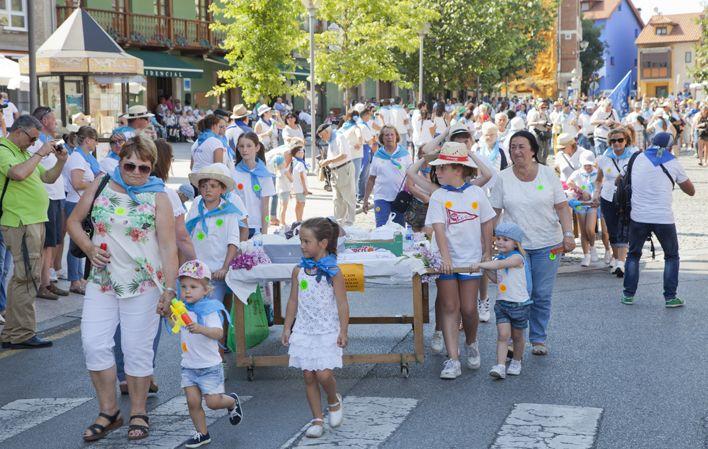
Fiesta of Our Lady of Carmen and Carmín
- Title Siero
- Address Locality: La Pola Siero
- Days Days: July (13th to 18th)
- Type Type: Festival of Touristic Interest of the Principality of Asturias
Images
Info
Talking about Carmín is like talking about something well-known and traditional: everything has been said or written by researchers at some point, but there is always something new to say. This festival was born in 1695, the year when Andrés Quintanal and his wife María García, residents of La Pola Siero and devotees of the Virgin of Carmen, funded the construction of Les Campes, a hermitage dedicated to this Virgin, forming a Brotherhood under the patronage of Carmel.
Chronicles tell that it cost them 12,000 reales, and it was blessed on July 17th of that same year, the day after the feast day of the patron saint, and it was proposed to celebrate the festival in 1696. The hermitage was located among the chestnut trees that occupied the current Plaza de Les Campes, next to the path followed by pilgrims heading to Santiago de Compostela. The numerous members of the brotherhood, coming from all over the province, celebrated their patron saint on the Sunday following July 16th, if that date did not fall on a Sunday, holding a procession that included, among other demonstrations, the dance known as "Los Danzantes" until the first decade of this century, as well as the display of numerous "Ramos" (flower bouquets), a tradition that lasted until 1879 when it was lost.
However, the attendance of the brotherhood on Sunday was so significant that it became necessary to organize a second festival on Tuesday, the day of the market in Pola de Siero, so that the devotees of the municipality could also celebrate their patron saint. These people, who were used to waking up early for the weekly market, would arrive in the town carrying food, which mainly consisted of eel pie and other homemade dishes that they would enjoy in the same "castañeu" (chestnut grove) once the religious acts and subsequent dances were finished. Needless to say, with their bellies full, they would continue with songs and dances, culminating at dusk with the "Danza Prima," whose refrain "¡Viva la Virgen del Carmen!" (Long live the Virgin of Carmen!) exalted the patron saint. The rise in popularity of the pilgrimage on Tuesday, at the expense of the one on Sunday, which we can consider as the embryo and origin of the current Carmín, was solely due to the secular component, acting as a driving force for changes in collective mentalities, gradually absorbing the religious component until it was nullified, leaving it exclusively to the Sunday celebration, consisting of a solemn mass and procession in honor of Our Lady of Carmen. Although these dates from the 17th century, the origins of the El Carmín pilgrimage may seem distant, it still remains, in essence, the same as that of the Tuesday pilgrimage, with the logical changes imposed by the times. One of these changes was the date of the celebration: it moved from Tuesday to the Monday following July 16th, the feast day of the Virgin of Carmen.
The fundamental reason for this change was the destruction of the patron saint's hermitage during the French invasion, as recorded in 1815 in one of the Church's factory books, signed by Don Diego Fernández Linares, the parish priest of La Pola Siero. It is also known from the documentation that the bell from the hermitage was given to melt a new one for the parish church, as the previous one was broken.
This historical summary clearly demonstrates the great tradition of a festival considered one of the major pilgrimages in Asturias, which fully enlivens the Asturian summer, not only on the day of the actual festival but also in the preceding days with various recreational and cultural activities.




